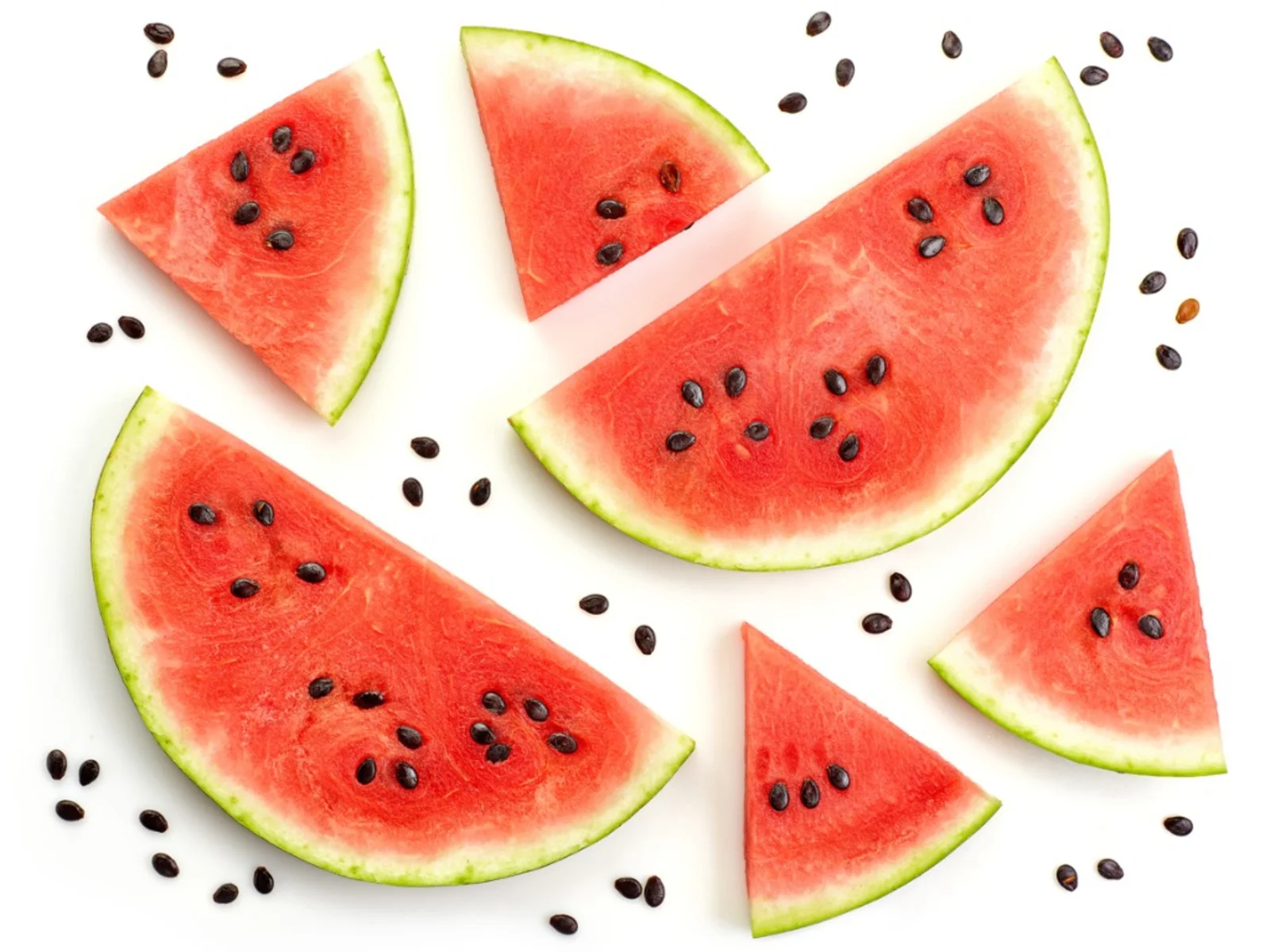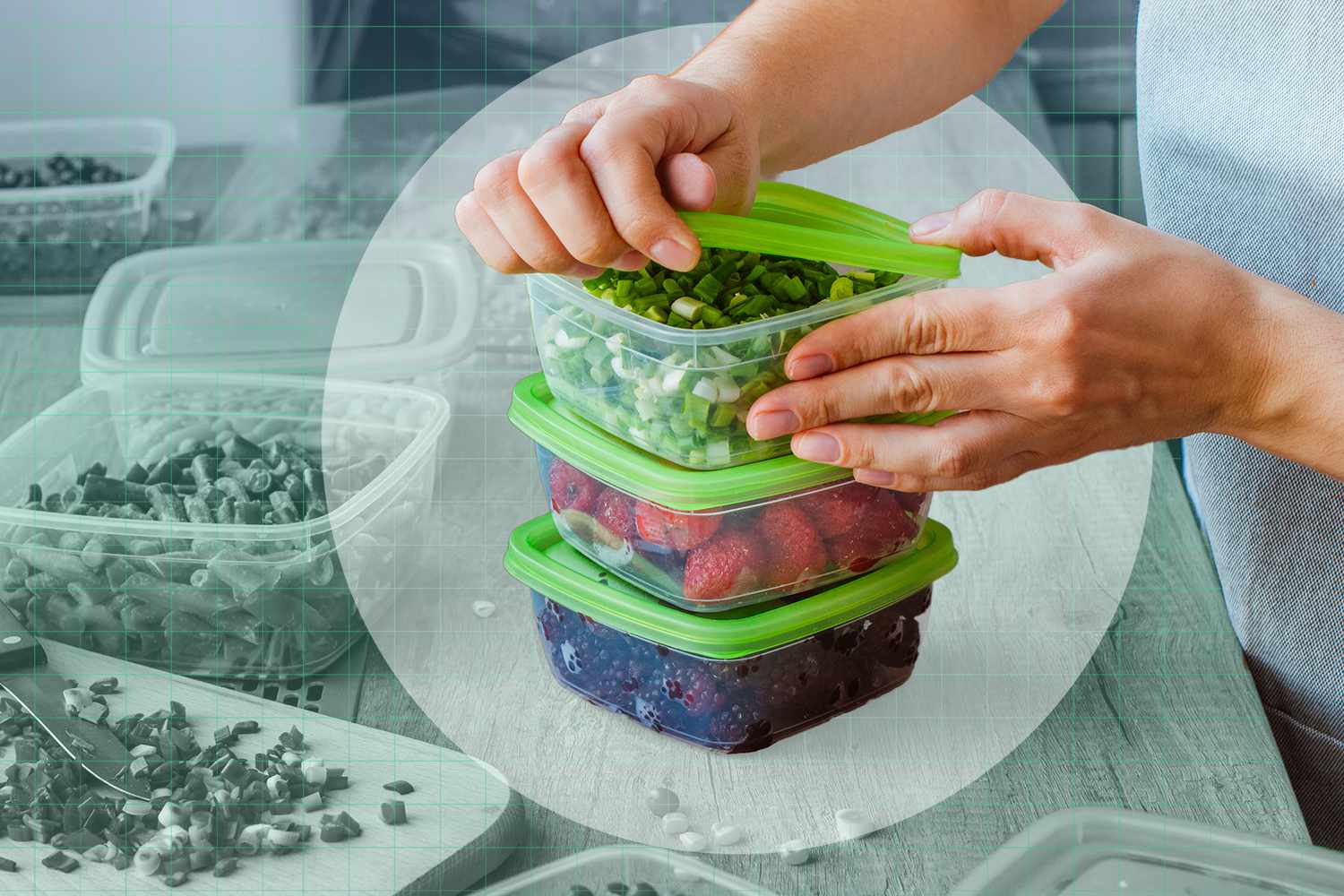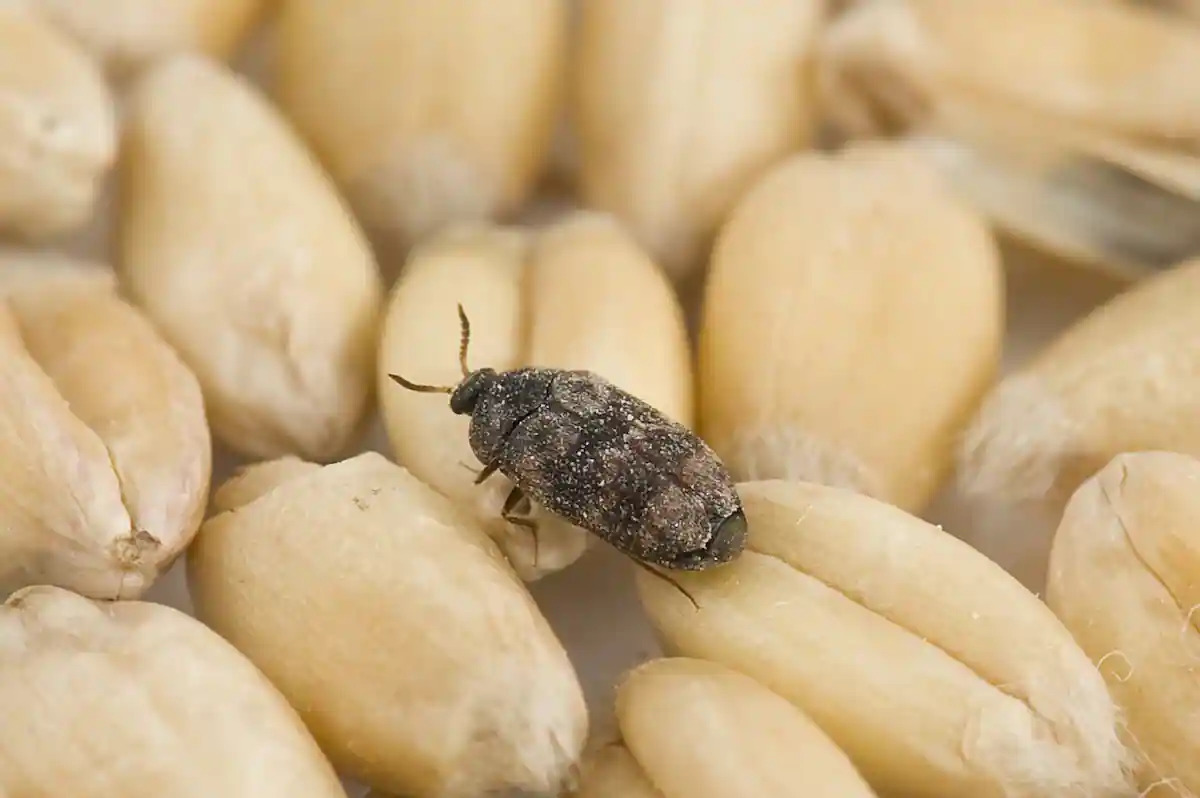Home>Types of Gardening>Edible Gardening>How To Preserve Watermelon Seeds


Edible Gardening
How To Preserve Watermelon Seeds
Modified: January 22, 2024
Learn how to preserve watermelon seeds through edible gardening techniques. Discover easy and effective methods to save and store seeds for future planting.
(Many of the links in this article redirect to a specific reviewed product. Your purchase of these products through affiliate links helps to generate commission for Chicagolandgardening.com, at no extra cost. Learn more)
Table of Contents
Introduction
Welcome to the wonderful world of edible gardening! If you’re passionate about growing your own food and have a special fondness for watermelons, then you’re in for a treat. Not only can you enjoy the juicy and refreshing fruit, but you can also preserve their seeds to grow your own watermelon plants in the future.
Preserving watermelon seeds is not only a fun and rewarding activity, but it also allows you to save money by avoiding the need to purchase new seeds each year. By taking the time to properly store watermelon seeds, you’re ensuring a sustainable and self-sufficient gardening practice.
In this article, we will explore the benefits of preserving watermelon seeds, guide you through the process of extracting and cleaning the seeds, and provide tips for successfully storing and preserving them. So, whether you’re an experienced gardener or just getting started, you’ll find valuable information to help you make the most out of your watermelon plants.
Benefits of Preserving Watermelon Seeds
Preserving watermelon seeds offers a range of benefits that go beyond just saving money on buying new seeds each year. Here are some key advantages:
- Sustainability: Preserving watermelon seeds allows you to practice sustainable gardening. By reusing seeds from your own watermelons, you’re reducing waste and minimizing your environmental footprint.
- Self-Sufficiency: When you preserve watermelon seeds, you’re ensuring a continuous supply of seeds for future planting seasons. This self-sufficiency empowers you to take control of your own gardening process and reduces reliance on external sources.
- Genetic Preservation: Each watermelon variety possesses unique characteristics, such as taste, texture, and resistance to diseases. By preserving the seeds of your favorite watermelon varieties, you’re preserving their genetic traits. This allows you to consistently grow watermelons with the same desirable qualities year after year.
- Cost Savings: Purchasing seeds can add up over time, especially if you’re growing watermelons on a larger scale. By preserving and reusing watermelon seeds, you’re cutting down on the costs associated with buying new seeds every season, making gardening more affordable.
- Experimentation: Preserving watermelon seeds gives you the freedom to experiment with different varieties and create your own unique hybrids. By selectively saving and cross-pollinating seeds, you can develop watermelons that suit your specific preferences, whether that’s a sweeter taste, a different color, or a more compact size.
Now that we’ve explored the benefits of preserving watermelon seeds, let’s move on to the next step: choosing the right watermelon for seed preservation.
Choosing the Right Watermelon
When it comes to preserving watermelon seeds, selecting the right watermelon to save seeds from is crucial. Here are some factors to consider:
- Heirloom Varieties: Heirloom watermelon varieties, which have been passed down through generations, often produce seeds that are more stable and true to their parent plant. Look for heirloom varieties known for their taste, texture, and overall quality.
- Mature and Ripe Fruits: To ensure viable seeds, choose watermelons that are fully mature and ripe. Look for melons with a deep, uniform color, and a hollow sound when tapped. Avoid fruits that are overly soft, have blemishes, or show signs of rotting.
- Open-pollinated Varieties: Open-pollinated watermelon varieties are more likely to produce seeds that are true to their parent plant. These varieties are pollinated naturally, either by insects or wind, resulting in seeds that retain the characteristics of the original watermelon.
- Disease-resistant Varieties: If disease resistance is a concern in your area, opt for watermelon varieties that have resistance to common diseases. This will ensure that your saved seeds have a higher likelihood of germinating and producing healthy plants.
- Flavor and Texture: Choose watermelons that possess the flavor and texture qualities you desire. If you prefer sweeter watermelons, look for varieties known for their sweetness. Similarly, if you prefer crisp and juicy melons, choose varieties with those characteristics.
It’s important to note that hybrid watermelon varieties, which are a cross between two different parent plants, may not produce stable seeds. If you’re specifically looking to save seeds for future planting, it’s advisable to stick to heirloom or open-pollinated varieties.
Now that you know how to choose the right watermelon, let’s move on to the next step: extracting watermelon seeds.
Extracting Watermelon Seeds
Now that you’ve selected the perfect watermelon for seed preservation, it’s time to extract the seeds. Follow these steps to ensure successful seed extraction:
- Cut the Watermelon: Use a sharp knife to cut the watermelon in half lengthwise. If you’re working with a larger watermelon, you can cut it into smaller sections for easier handling.
- Scoop out the Seeds: Use a spoon or your hands to scoop out the seeds from the watermelon flesh. Place the seeds in a bowl or separate them onto a clean towel or paper towel to keep them organized and prevent them from rolling away.
- Separate the Seeds from the Pulp: Gently rub the seeds between your fingers to remove any pulp or attached fruit flesh. You can also rinse the seeds under running water to help clean them further.
- Inspect the Seeds: Take a close look at the extracted seeds and discard any damaged or discolored seeds. Keep only the healthy and fully developed seeds for preservation.
- Leave the Seeds to Dry: Once the seeds are separated and inspected, spread them out in a single layer on a paper towel, a mesh screen, or a tray. Place them in a well-ventilated area away from direct sunlight to dry for about a week. Make sure to turn the seeds occasionally to ensure even drying.
During the drying process, the seeds will shrink and become hard. This is a normal part of the preservation process, as it helps to extend their shelf life and maintain their viability.
Now that you’ve successfully extracted the watermelon seeds, let’s move on to the next step: cleaning and drying them.
Cleaning and Drying Watermelon Seeds
After extracting watermelon seeds, it’s crucial to properly clean and dry them to ensure their quality and longevity. Follow these steps for effective cleaning and drying:
- Rinse the Seeds: Place the extracted seeds in a colander or fine-mesh sieve and rinse them under cool running water. Gently agitate the seeds with your fingers to remove any remaining pulp or debris. Avoid using any harsh cleaning agents or chemicals.
- Pat Dry: Once rinsed, carefully pat the seeds dry with a clean towel or paper towel. Be gentle to avoid damaging the seeds.
- Air Drying: Transfer the cleaned seeds to a dry surface, such as a plate or tray lined with wax paper, or a clean and dry paper towel. Spread the seeds out in a single layer to allow for better airflow and even drying. Place them in a cool, well-ventilated area away from direct sunlight.
- Monitor the Seeds: Check on the seeds periodically to ensure they are drying properly. If you notice any signs of mold or moisture, gently blot the seeds with a fresh, dry paper towel and allow them to continue drying.
- Complete Drying: Leave the seeds to air dry for about two to three weeks or until they are completely dry and hard. They should easily break when pressure is applied.
Properly cleaning and drying the watermelon seeds not only helps remove any remaining debris but also minimizes the chance of mold or bacteria growth during storage. By ensuring completely dry seeds, you increase their longevity and viability for future planting.
Now that the watermelon seeds are cleaned and dried, it’s time to learn how to store them for future use.
Storing Watermelon Seeds
Proper storage is essential to maintain the viability and quality of watermelon seeds. Follow these steps to store your watermelon seeds correctly:
- Label and Store: Prepare small, airtight containers such as glass jars, plastic bags, or seed envelopes. Label each container with the variety and date of harvesting to keep track of the seeds. This is particularly important if you have multiple watermelon varieties.
- Seed Dryness Test: Before storing, ensure the seeds are thoroughly dry by performing a seed dryness test. Place a few seeds on a paper towel and press gently. If there is no moisture residue left on the paper towel, the seeds are sufficiently dry for storage.
- Transfer the Seeds: Transfer the dry watermelon seeds into the prepared storage containers. Seal the containers tightly to prevent moisture or air from entering. You can also add a desiccant packet or a small amount of powdered milk to help absorb any remaining moisture.
- Store in a Cool, Dark, and Dry Place: Find a suitable storage location that is cool, dark, and dry. A pantry, cellar, or refrigerator can be ideal choices. Avoid storing the seeds somewhere with extreme temperature fluctuations or high humidity.
- Avoid Freezing: Although some gardeners opt to store seeds in the freezer, watermelon seeds are generally not recommended for freezing. The moisture content in the seeds can be adversely affected, leading to reduced germination rates.
- Regularly Check and Proper Rotation: Periodically check the stored seeds for any signs of moisture or mold. Also, remember to rotate your seed stock, using the oldest seeds first to ensure freshness and germination success.
By following these storage guidelines, you can preserve the quality and vitality of your watermelon seeds for several years, ensuring a constant supply of seeds for future cultivation.
Now that you know how to store your watermelon seeds properly, let’s explore some additional tips for successful seed preservation.
Tips for Successful Seed Preservation
Preserving watermelon seeds requires careful attention to detail to ensure the best possible outcome. Here are some valuable tips to help you succeed in seed preservation:
- Select Healthy and High-Quality Seeds: When choosing watermelons for seed extraction, opt for fruits from healthy and disease-free plants. This will increase the chances of obtaining viable and robust seeds.
- Save Seeds from Multiple Fruits: To increase genetic diversity and minimize the risk of relying on a single fruit, save seeds from multiple watermelons of the same variety. This enhances the likelihood of producing healthy and productive plants for future generations.
- Properly Label and Organize: Labeling is crucial to keep track of seed varieties and the year of harvesting. This information will help you stay organized and ensure you know the age and origin of each batch of seeds when it comes time to use them.
- Maintain Optimal Storage Conditions: Store your watermelon seeds in a cool, dark, and dry place to extend their shelf life. Avoid exposing them to fluctuations in temperature and humidity, as this can impact their viability.
- Rotate Your Seed Stock: Regularly rotate your seed stock by using the oldest seeds first. This ensures that the seeds remain fresh and viable, allowing you to make the most of your preserved seeds.
- Practice Good Seed Saving Hygiene: When extracting and handling watermelon seeds, make sure to maintain good hygiene. Clean your hands, tools, and storage containers to avoid introducing any pathogens or contaminants that could impact seed quality.
- Develop a Seed Saving Calendar: Keep a record of when you harvested and stored your watermelon seeds. This will help you plan ahead and ensure you always have a fresh supply of seeds for each planting season.
- Share Seeds with Others: Seed sharing is a wonderful way to promote biodiversity and connect with fellow gardeners. Consider sharing your preserved watermelon seeds with other gardening enthusiasts to spread the joy of growing your own produce.
- Experiment and Have Fun: Don’t be afraid to experiment and try new techniques when it comes to preserving watermelon seeds. Each gardening season provides an opportunity to learn and improve your seed-saving skills, so embrace the process and enjoy the journey.
By following these tips, you can increase the success rate of preserving watermelon seeds and elevate your gardening experience.
Now that we’ve covered the essential tips for successful seed preservation, let’s conclude our article on preserving watermelon seeds.
Conclusion
Preserving watermelon seeds is a rewarding and sustainable practice that allows you to maintain a continuous supply of seeds for future planting. By following the steps outlined in this article, you can successfully extract, clean, dry, store, and preserve watermelon seeds with ease.
Not only does seed preservation offer financial benefits by eliminating the need to purchase new seeds each year, but it also promotes self-sufficiency and empowers you to take control of your gardening process. Additionally, preserving watermelon seeds allows you to maintain the unique characteristics of your favorite varieties, ensuring consistent taste, texture, and disease resistance.
Remember to choose ripe and mature fruits, extract seeds carefully, clean and dry them thoroughly, and store them in a cool, dark, and dry place. By following these guidelines and incorporating the tips provided, you can enhance the longevity and quality of your preserved watermelon seeds.
So, whether you’re an experienced gardener or just starting your edible gardening journey, take the time to preserve your watermelon seeds. Not only will you enjoy the delicious fruit, but you’ll also have the satisfaction of growing your own watermelon plants from the seeds you saved.
Get ready to embark on a journey of sustainability, self-sufficiency, and experimentation as you preserve watermelon seeds and unlock the endless possibilities of growing your own delicious watermelons year after year. Happy seed preservation and happy gardening!








